
hong kong & taiwan
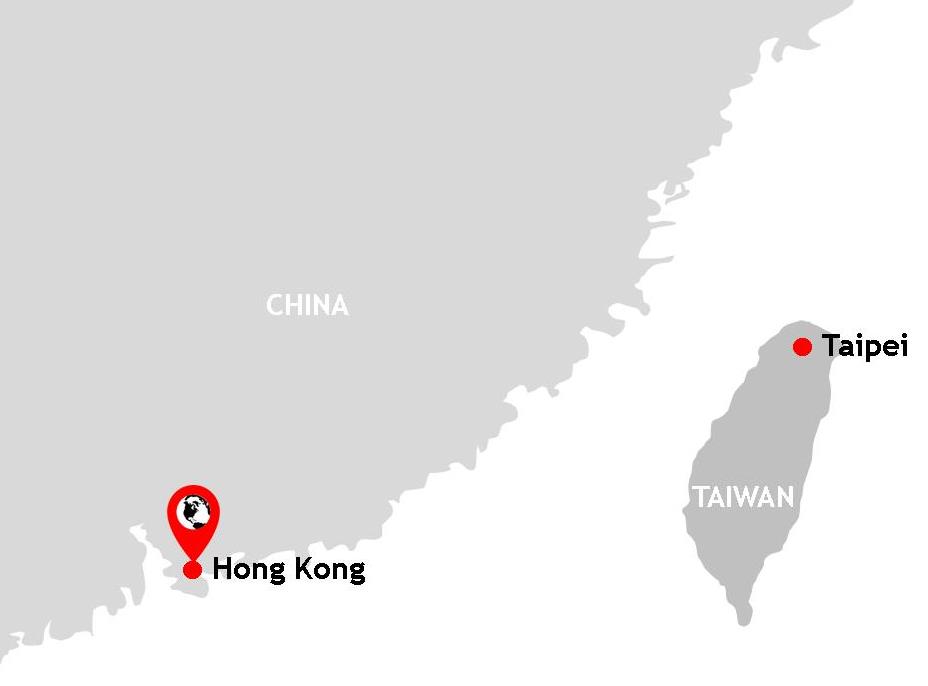
Where: Lantau, Kowloon & Hong Kong Island, Hong Kong. Taipei & Tamsui, Taiwan. Asia.
When: July 2019.
What: Night time neon, Hong Kong Island skyline, Star Ferry journey, Ride on iconic Ding Ding trams, Tian Tan 'Big Buddha', Monster House, Goldfish Street, Taipei 101, Chiang Kai-Shek Memorial Hall, Confucius Temple, Tamsui River, Taoist Tian Yuen Temple, Temple Street Night Market, Sam's Tailors.
How: International flights x 4, Walking, Taxi, Tram, Ferry, Monorail, Transfer minibus, Cable car.
Country counter: No.87 & No.88
Illnesses or mishaps: Narrowly avoiding getting caught up in the EVA Air strike at great additional expense; visiting Hong Kong at a time of political unrest and avoiding places where demonstrations were taking place; heat rash; dodging several Hong Kong downpours.
This was a journey to two 'countries' that are and are not part of China depending on who you speak to. The South China Sea is an area of the world becoming increasingly absorbed into China's sphere of influence. So, depending on your opinion, I either visited two additional countries - or just one - or even none. Some would say that I never left China during my entire trip from Hong Kong to Taiwan. Others would say, including the majority of Hong Kongese and probably all of the Taiwanese, that I have, without doubt, added two additional countries to my country counter. To go some way to referencing this complexity on my site, I have structured both destinations as their own country as well as adding them under my China menu page.
Ignorantly, I had initially anticipated that both Hong Kong and Taipei would echo each other in many respects. Perhaps I'd made this assumption because of their relative geographical proximity to each other, with there being a mere one and a half hour's flight time between them - minuscule in Australian terms. Of course, generalising different places in this way could only be the default position of the outsider who has been to neither. The best thing about travelling to more than one country on a trip - no matter how close or far apart they are - is that your journey reboots just at the point when you begin to tire of a place, begin to get itchy travel feet or start to look for greener grass on the other side. A trip to Hong Kong with Taiwan added created the perfect Asian fusion; both contrasting beautifully. I found Hong Kong fast-paced and high-octane but Taipei easy-going and full of smiles. There were other contrasts, too. The photographs below I hope will go some way to teasing out the uniqueness of both destinations. So, welcome to Hong Kong and to Taiwan - my 87th and 88th countries respectively. Or, perhaps, welcome to just China. You choose...
hong kong
Hong Kong City
After some ten hours flying in an aluminium tube from Sydney to Hong Kong, I swapped a chilly Australian winter for the challenging humidity of a sub-tropical Hong Kong. A taxi soon whisked us from the sterility of the airport (why are all airports the same these days?) and past thin, almost ghostly, apartment towers standing in rows and sparkling in the night like an unwelcoming spectral army. And this, my first observation of Hong Kong, was to remain throughout my time there; there was an inhumanity in the place which I found both alienating and awesome. This is a city designed for corporations and not people, its ambivalence towards its inhabitants immortalised in the ubiquitous tower blocks standing in, seemingly, clusters of twenty or more. It is not just the size or lack of architectural merit of the blocks themselves that I found so dispiriting, but their sheer number; an uncompromising presence on the Hong Kong architectural scene. I have travelled all over the former communist Eastern Bloc and am familiar with this kind of urban architecture but never before have I seen it in such monstrous density. Then again, this aspect of Hong Kong isn't surprising; it is one of the most densely populated cities on earth. Indeed, the so-called "Monster Building" in Tai Koo district offers a glimpse into Hong Kong's urban poor, a building with three sides all facing in on each other with collapsing balcony upon collapsing balcony. It is a gruesome and humbling sight. Whilst Hong Kong is the most expensive place on earth to visit, I can attest to the fact that a significant chunk of its inhabitants seem to live hand to mouth, squirrelled away in these dystopic tenements far from the glitz and the glam and international jet-setters.
Hong Kong, on the edge of the Chinese mainland, is an Asian titan which looks confidently and brashly out into the South China Sea. Perplexingly it is part of China but not really part of China, with this paradox contradictorily expressed in the "one state, two systems" phrase coined as part of the process which saw Great Britain hand Hong Kong back to China in 1997. Our visit to Hong Kong came at a time of protests, unprecedented in their scale and passion. Indeed, just a week before touching down in Hong Kong, protests had reached a new climax, with demonstrators forcing their way into the main legislative building. Hong Kongese were protesting about moves to extradite criminals from Hong Kong to China - effectively the first step towards dissolving Hong Kong's legal system. The people saw this for what it was: an effort to weaken the the rights and freedoms of Hong Kongese by stealth as in China the courts have a 99% conviction rate. I was surprised to see on the television news, playing in my hotel room, that protests had been taking place that day in the very district of the city in which we were staying. Somehow, by accident rather than by design, we managed to avoid encountering the chaos.
There is no doubt that Hong Kong's city skyline is truly world class (it has the largest number of skyscrapers in the world) but, despite being wowed by its towers set against a dramatic backdrop of soaring mountains, its effect on me dissolved rather quickly. These clusters of glass palaces, the stuff of many a city these days, are the equivalent of candy floss: they look pretty from a distance, until you get close and realise they provide nothing but empty calories, their charm, like the floss, rapidly dissolving in the mouth. I felt the need to get away from the glass skyline and seek out a more authentic Hong Kong once we'd completed the obligatory Star Ferry trip over to Hong Kong Island and riding the cute little Ding Ding trams - a transportational relic of a bygone Hong Kong which offered a small but important glimpse into a bygone Hong Kong. Indeed, I could sense only feint echoes of its days under British rule: the presence of the odd Marks and Spencer store, some of the street names (Prince Edward Street, Nathan Road), red double decker buses (although this could be pure coincidence) and British-style power sockets. I was also pleased to see for myself, as understated as it is, the Sam's Tailors shop along Nathan Road once visited by Michael Palin, one of my all-time travel heroes, in his ground-breaking travel series Around the World in Eighty Days.
Hong Kong has all of the components of any megacity. It's a synethesian nightmare of flashing lights, beeping sounds and a coughing throng of people. Sometimes it felt like every surface in Hong Kong was covered in signage, lights or a speaker - or all three. It is a scintillating, thrilling and overwhelming place. Admittedly, on two occasions this city had me jumping into the nearest taxi and heading for the seclusion of the hotel room to allow my senses to recalibrate to something near-normal. But that's okay, I didn't exactly go to 'HK' for a relaxing city break, did I?
As I attest frequently on this site, I don't holiday, but travel. My criteria for deciding to travel anywhere is really very simple: (a) Is it safe? and (b) Have I been there before? And so, with the answers of 'Yes' and 'No' respectively, I either headed to country number 87 or just paid a second visit to China. Or I did both at the same time. This was my 48 hours in Hong Kong, one of the most densely populated places on earth with the largest number of skyscrapers on earth and caught, precariously, between China and something like independence.
The impressive Hong Kong skyline seen from Kowloon.
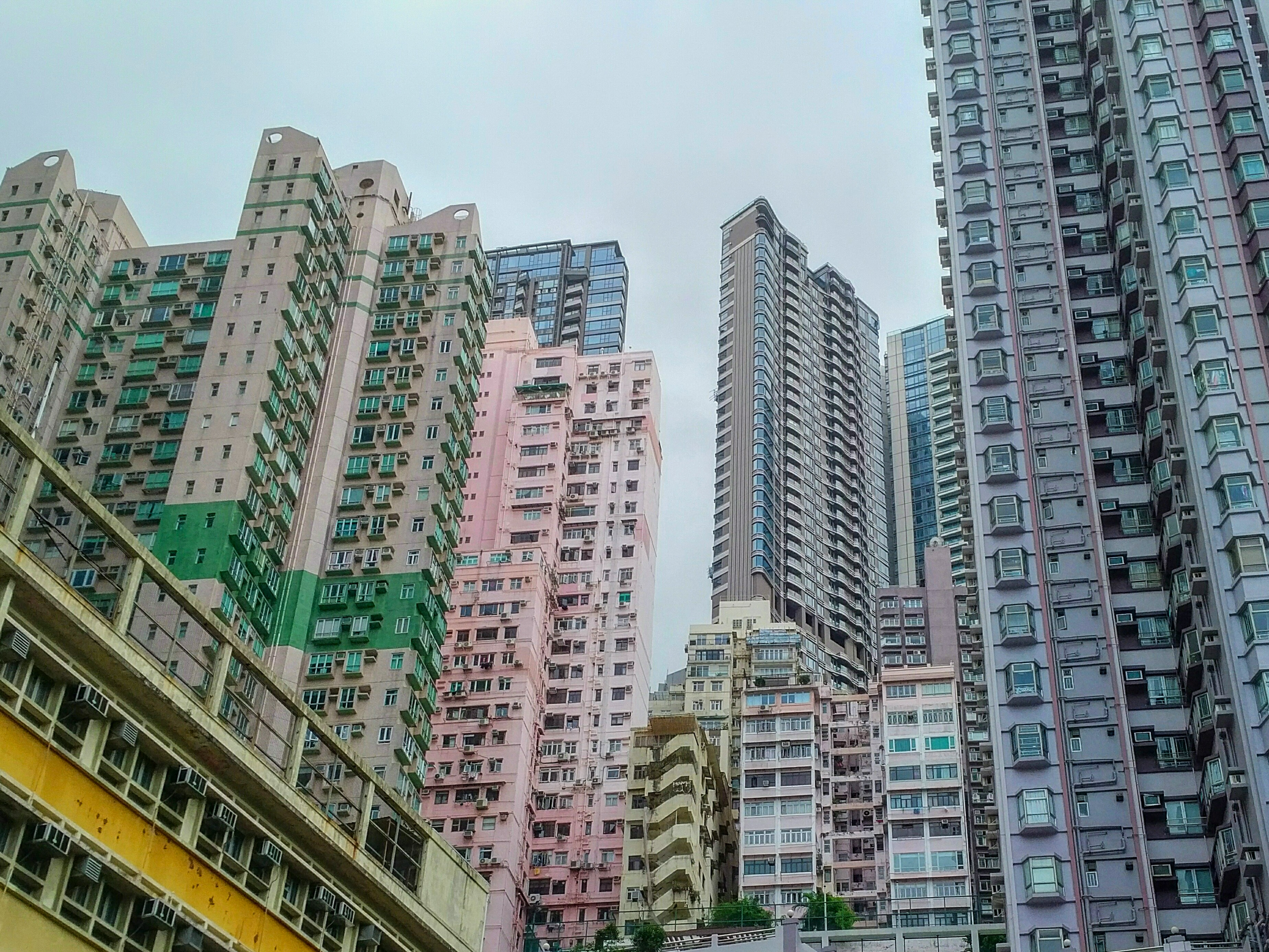
Fascinatingly dense vertical living Hong Kong style.

The Hong Kong spatial squeeze: a tower erupts between a break in tenements.
Hong Kong at night (1): the Temple Street Night Market seen from above.

Hong Kong at night (2): night-time neon lights in Kowloon.

The Hong Kong skyline puts on a world class performance at night.

The impressive Hong Kong skyline seen from Kowloon.
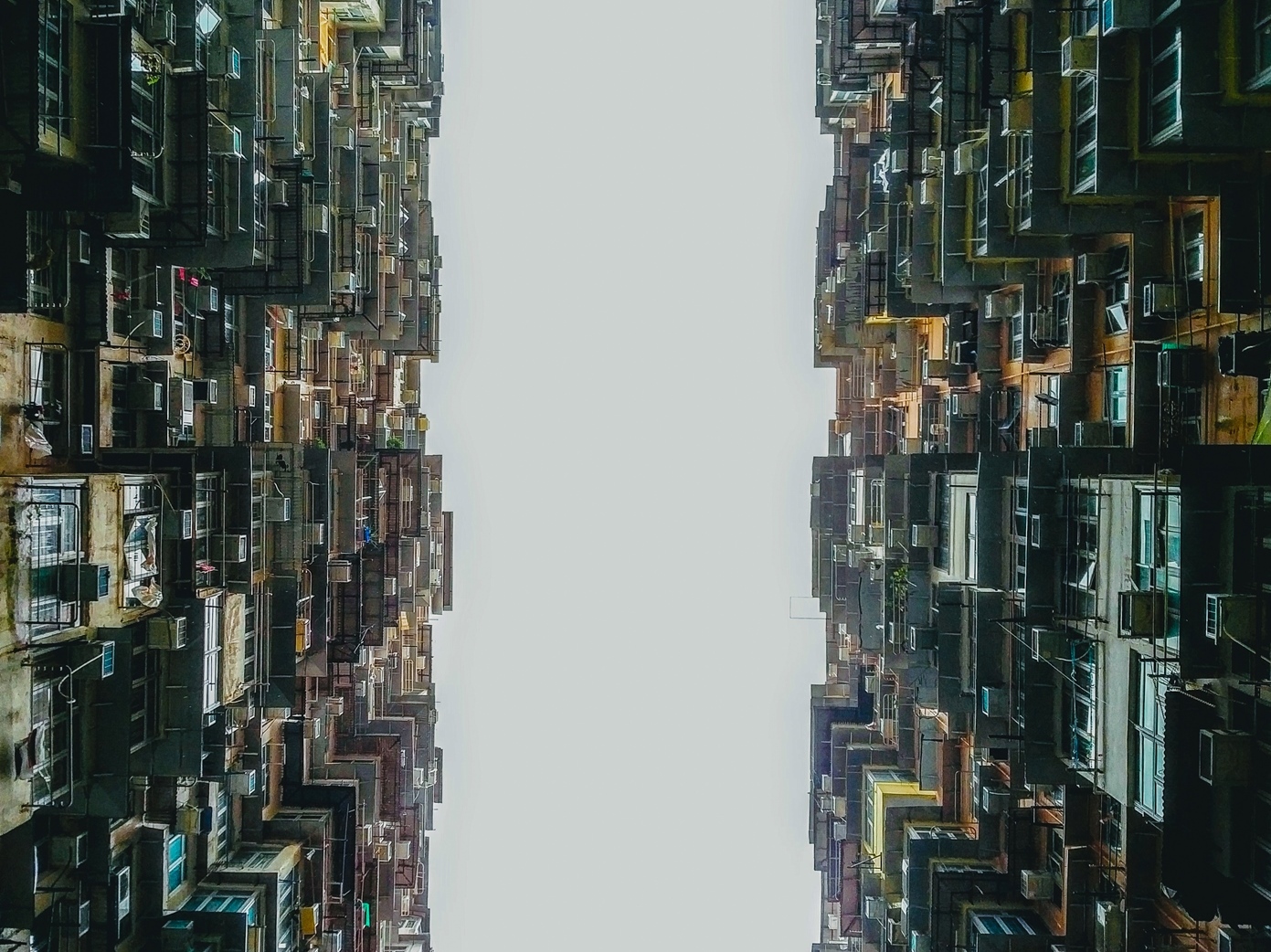
Density monstrosity: Hong Kong's 'Monster Building'.
taiwan
Taipei
The Taiwanese capital Taipei doesn't make a particularly good first impression. The road leading from the international airport is littered with low rise carbuncles which rekindled memories of my travels in eastern Europe. On first meeting, Taipei feels austere, heavy, almost Soviet in appearance. Was I in Taipei or Tirana? Some of Taipei's buildings also feature incongruous embellishments such as turrets and cones which seem completely out of keeping with the place, like some unlikely architectural collaboration between the USSR and Disneyland. However, I wasn't too worried; I consider myself particularly adept at finding the beauty in the least photogenic of places. At least, I thought, Taipei's low-rise blandscape would be the perfect antidote to the dizzying verticality and relentless intensity of Hong Kong.
We based ourselves in the Zhongzheng district of the city - a mere few hundred metres from the beautiful Chiang-Shek Memorial complex, an ensemble of traditional white buildings with striking blue tiled roofs and a dramatic gateway. Whilst beautiful, this landmark is a difficult place for the Taiwanese acting, as it does, as a reminder of darker times under the rule of China's president Chiang-Shek. The significance of this space can be read in the name of the square into which all four main buildings gaze: Liberty Square. I was to return to the complex the following day as the deluge and grey sky, which had compromised my earlier photographic efforts, had relented; the blue tiles now positively glowing under a clear blue sky. If you want to get a feel for the Taiwanese character, head to Chiang-Shek on a sunny morning to observe their fun-loving, exuberant and open-spirited approach to life. In my time in Taipei I would come across old ladies ballroom dancing under Chiang-Shek's arches, men singing in open-air karaoke competitions (the Taiwanese are obsessed with karaoke) in its gardens, teenagers break-dancing in the shadow of its theatre concert hall and yoga classes for senior citizens taking place on its lawns. Whatever the history of the Chiang-Shek, it is clear that Taipeians have claimed this most national of spaces for their own enjoyment - a kind of spatial reclamation, if you will. This positivity finds its most obvious expression in the Hello Kitty phenomenon from Japan which has been wholeheartedly embraced by the Taiwanese. Indeed, the Taiwanese national airline EVA Air has Hello Kitty livery emblazoned on some of its aircraft. There's a childish innocence about Taiwan that I found utterly endearing.
Taipei, similar to my experience in South Korea, doesn't cater to the western palate too well (that's okay - why would they?) and so we found ourselves falling upon the mercy of a local eatery located above some shops in the Xinyi district of the city. My meal here was made memorable by the presence of a Labrador puppy but also because we were each presented with a portable cooking stove complete with blue gas flame and silver dish above. We had to add the bowl of fresh vegetables ourselves and watch them cook. Not really expecting to have to cook my own food (especially having paid Taiwanese prices) I ended up singeing the hairs on my wrists more than once forced, as I was, to reach across to various bowls and implements which now cluttered the table, and all the while our doggy friend roamed the restaurant jumping up at tables and dozing off on the floor - much to the delight of the restaurant's Taiwanese patrons. And me.
The following morning, and after a marathon travel sleep which saw me pass out for the best part of twelve hours (no doubt the result of a long flight, the July humidity in this part of the world as well as the sensory overload of Hong Kong), I flung open the hotel room curtains to reveal a crisp blue sky and the start of a new day. I love moments like this: beautiful weather + foreign place = infinite possibilities for adventure, sightseeing and the photographing thereof. This break in Taipei's stormy weather, which had characterised the previous day's experience, was particularly fortuitous as this was the day we were planning to pay our obligatory visit to Taiwan's most famous landmark: Taipei 101. Taipei 101, in a world where glass towers are positively ubiquitous, is arguably iconic, and not because it was, albeit briefly, the tallest tower in the world. Its design is a successful fusion of modern architecture with traditional Asian designs. And it isn't a contrived, theoretical fusion, either; it speaks simultaneously of Taiwan's future, but also its heritage. Taipei 101 rises above a rather unremarkable cityscape - an assortment of low-class tin roofed dwellings, 1970s cuboids and a few more interesting architectural offerings which draw the eye, albeit briefly.
Having dealt with the must-sees, we were left with plenty of time to delve a little deeper beyond Taipei's obvious landmarks. We took to hiring Ubers by picking up Wi-Fi spots at each juncture to travel from place to place in a bid to avoid the intense heat of the Taiwan summer; temperatures rose steadily to 37 degrees during our stay and were interspersed with episodes of thunder, lightning and unforgiving downpours. Using taxis in this way, as well as the Taipei Metro, were the only feasible ways of traversing the city, allowing us to pay visits to the traditional Datong district, made up of petite shops selling traditional Taiwanese teas and lanterns, the ornate, technicolour Confuscias and Dalong Dong Baoan temples.
Our final full day in Taipei was spent travelling to the end of the line on the Taipei Metro, disembarking at Tamsui. We were drawn there by the prospect of seeing some picturesque boats moored at the fishermen's wharf. I photographed what I thought were the boats we'd come to see, and walked along the dreadful Tamsui riverside, packed full of tacky souvenir shops and low-class eateries selling deep fried squid, snails and anything else that could be dragged from the ocean and put on a stick. Half-naked middle aged men stood behind their stalls scratching their bellies in the near 37 degree heat, light bulbs dangled over the plastic bowls containing the unidentifiable delicacies on offer and kids played on noisy, plastic fairground games. It was a terrible place in which to find ourselves: somehow, with the promise of seeing some boats, we had ended up in the Taiwanese equivalent of Blackpool (a UK seaside town not known for its sophistication). We headed back toward Tamsui station feeling a little deflated that our last day in Taiwan had been a bit of a pointless affair. Oh well, dealing with disappointment is an unavoidable part of travel, I mused. It had been an interesting trip out of central Taipei, I comforted. However, by pure chance we came across a giant map on a wall outside Tamsui station just as we were about to head inside for the long track back to the city. It was entirely in Mandarin but did feature drawings of key places - the kind of map I find infinitely helpful when travelling abroad. Immediately a large, multi-level pagoda stood out. It reminded me of The Hall of Prayer for Good Harvests at the Temple of Heaven I had seen in Beijing. The map wasn't exactly drawn to scale and so we headed off in a taxi, not really knowing how far away this tantalising piece of architecture really was. Several kilometres later, and several hundred New Taiwanese Dollars the lighter, I was staring at one of the most beautiful religious buildings I think I have ever seen: the Taoist Tian Yuen temple set against a dramatic mountainside and an ever-changing sky of blue and cloud. The fishermen's boats we had come to Tamsui to see paled into insignificance in comparison.
Just like one of the many lilies which lined the path up to the pagoda, Taipei gently unfurled her petals during our time there - each day choosing to reveal something beautiful. Shamefacedly I had expected so little of Taiwan - expectations perhaps lowered by its "Made in Taiwan" reputation as a producer of shoddy consumer products - yet she welcomed us with her fun-loving people, wonderful temples and arelaxed pace. I love it when a country surprises me like this.

The grand NationalConcert Hall in Taipei's Liberty Square.
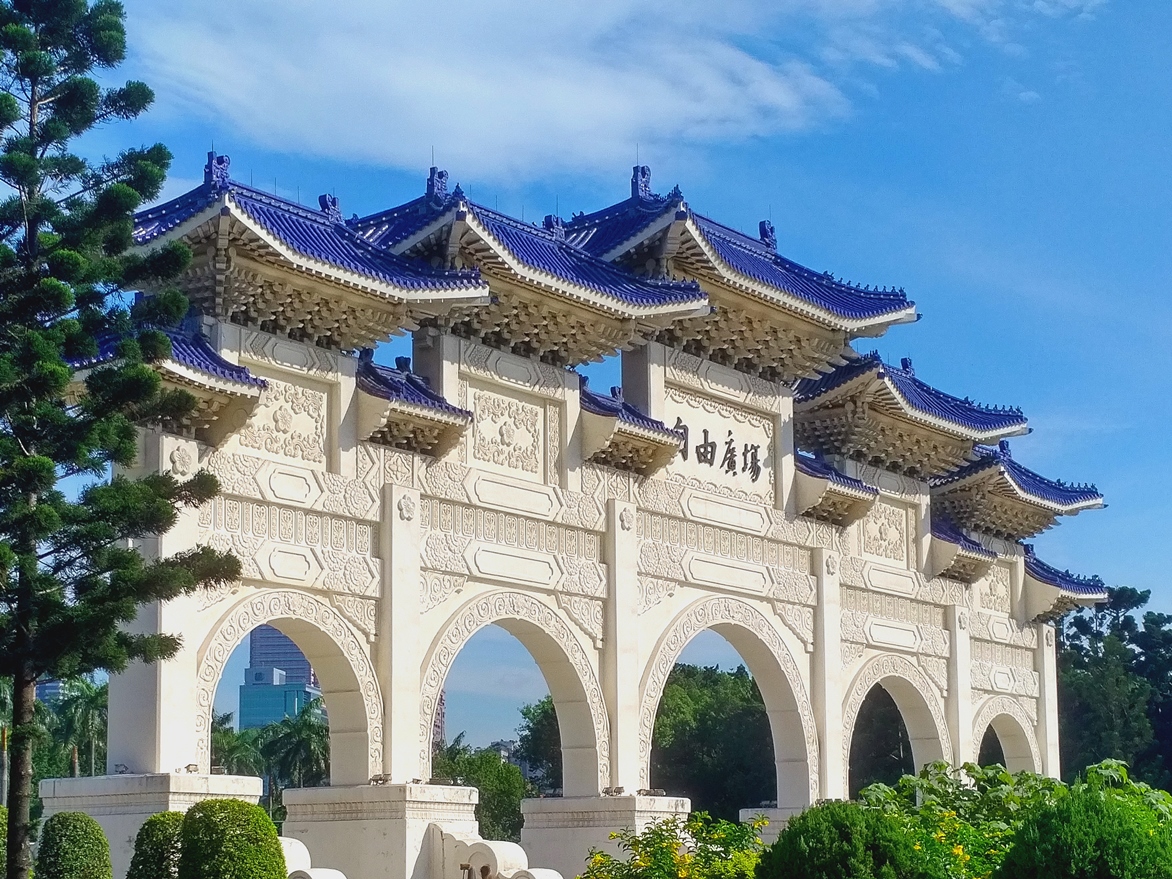
Dramatic entrance to the Chiang Kai-Shek Memorial Hall.

Traditional lanterns for sale in Datong district.

The Chiang Kai-Shek Memorial Hall. Taiwan is why I travel.
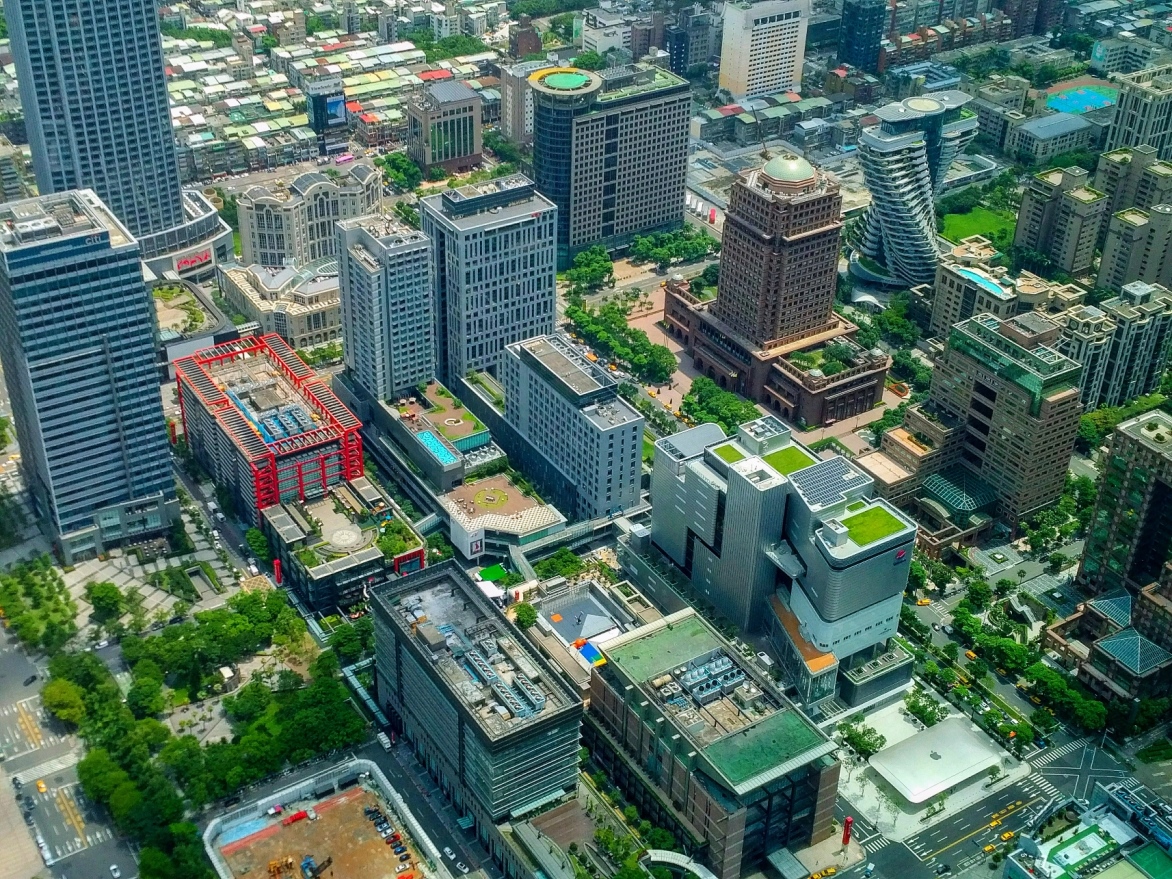
Circuitboard-like Taipei viewed from Taipei 101. Can you spot the Apple building in the design of one of its laptops?

Taipei 101 marries the traditional and the modern.

Overlooking the Tamsui River and across to Kuanyin Mountain. It got to 37 degrees during our trip out to Tamsui.
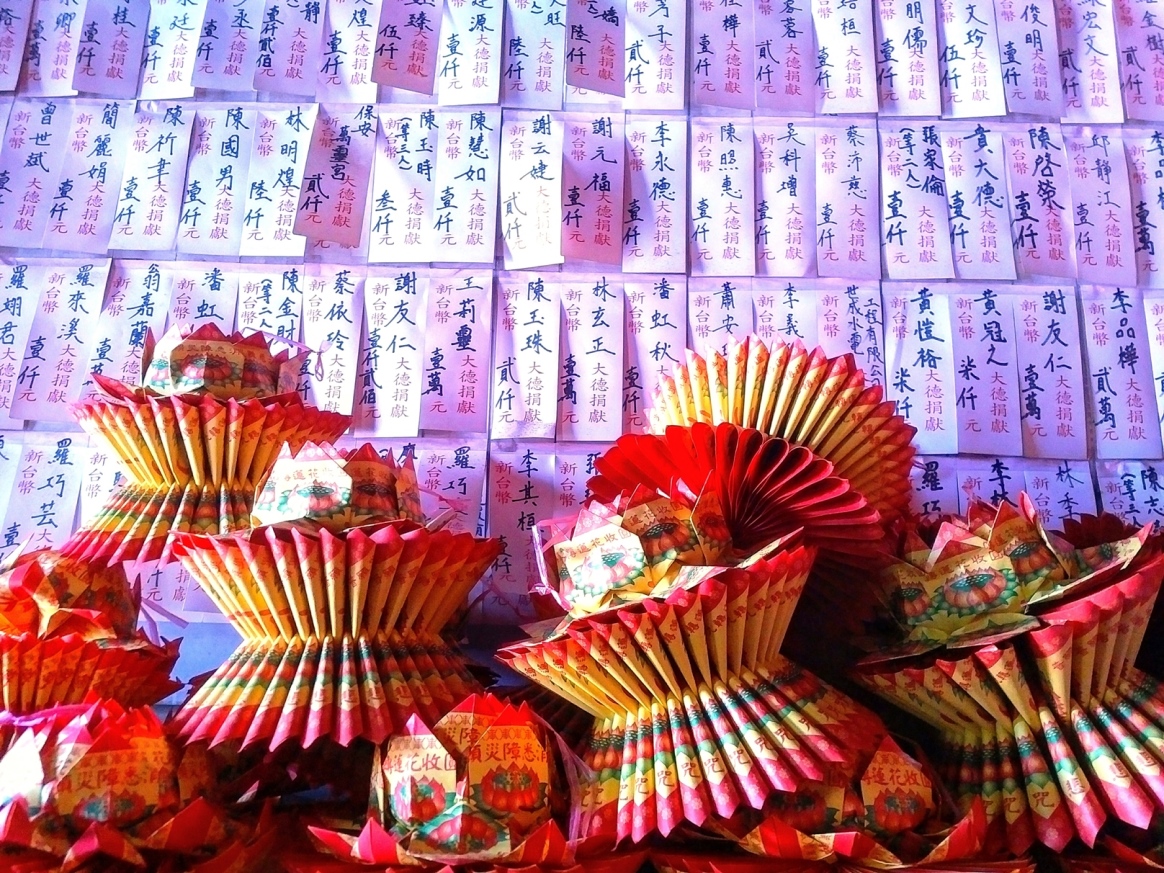
Prayers at Tamsui's Taoist Fuyou Temple.
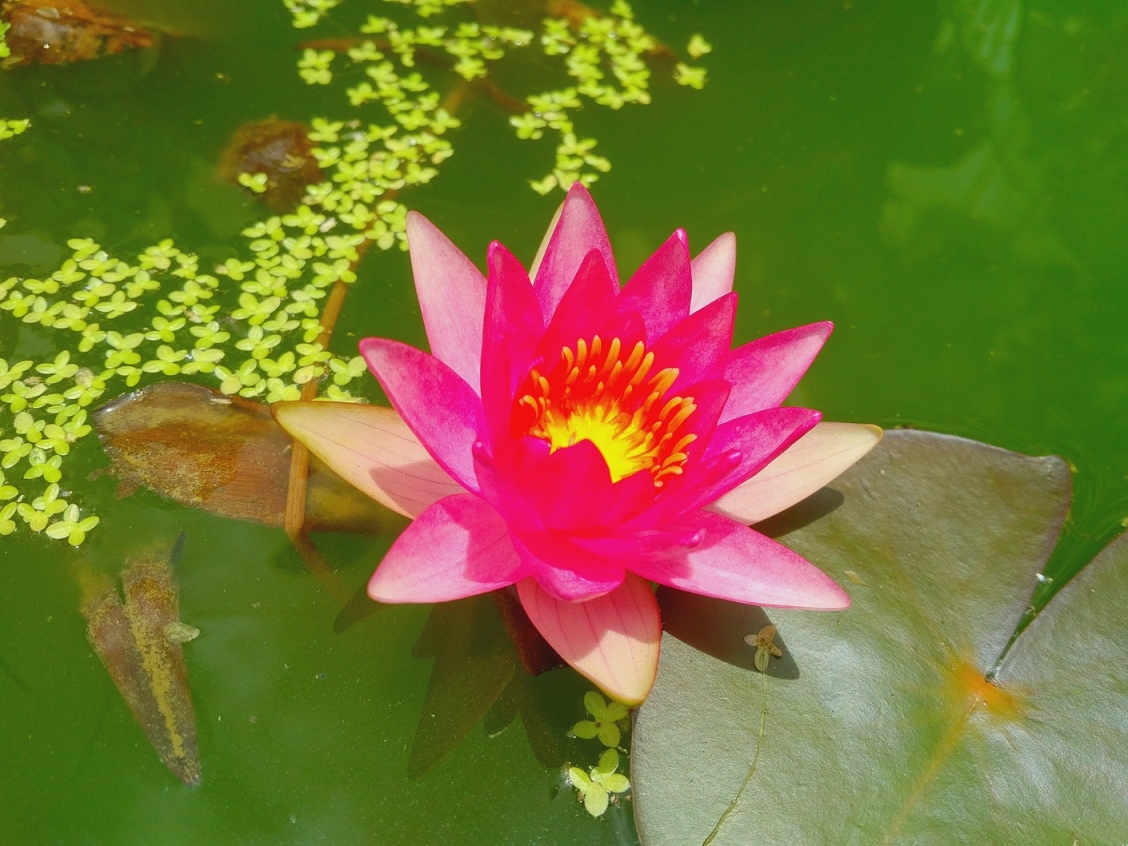
Blooming lily at Tamsui's Taoist temple.
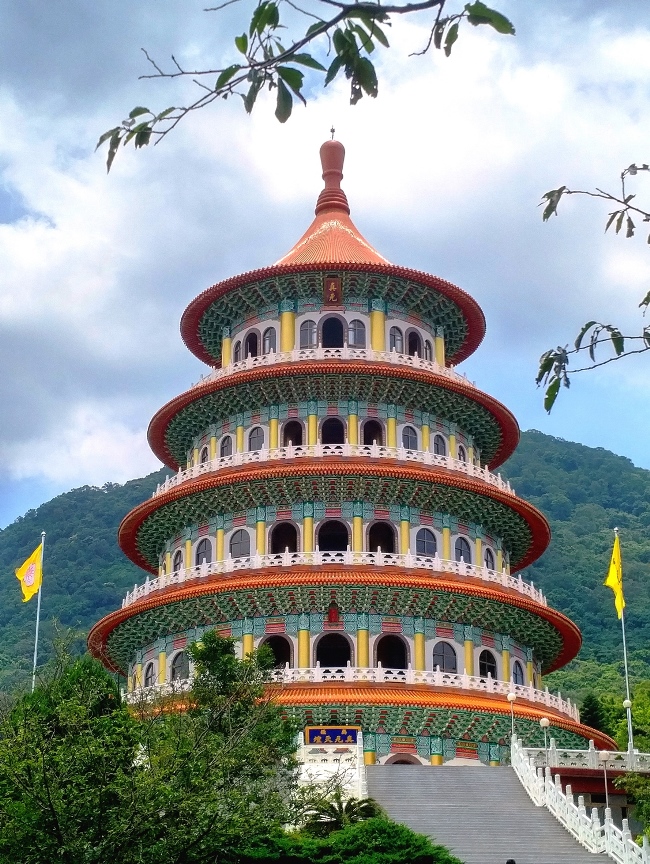
Tamsui's Taoist Tian Yuen Temple pagoda.
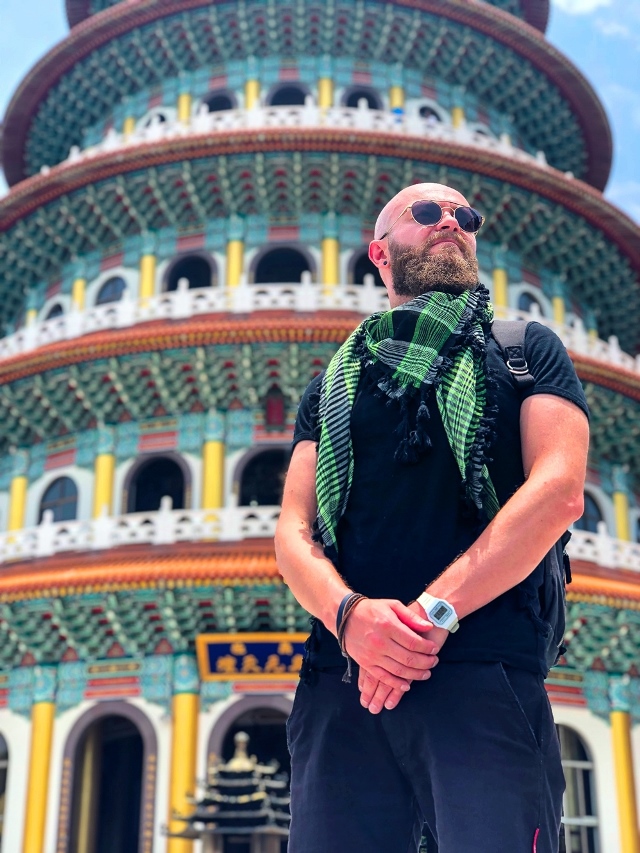
Tamsui's incredible Taoist temple, which we happened upon by chance.
travel tips, links & resources
- For ease of travel, be sure to pick up your smart 'Octopus Card' for tap on/tap off access to most transport options in Hong Kong. If you find you have a stash of cash left on the card by the time you get to the airport, don't worry as you can use it to pay for items like drinks or souvenirs. The same applies to Taipei's 'EasyCard'.
- Visit Taipei 101 early in the morning. The observation deck, at time of writing, opens at 9am. This means you will miss the crowds and avoid queueing. The shopping mall that Taipei 101 it is attached to doesn't open until 11am and, as a result, we spent valuable time wandering around the exterior of the mall (in the heat) trying to gain access to the building and then wandering around on the inside trying to find the correct escalators and lifts to get us to the tower. Signage was poor.
- Hong Kong's Temple Street has an awesome night market which looks superb from above (it's the photograph you'll see on blogs and in travel guides). There is a multi-level car park at one end of the market which we sneaked into and then travelled to the third floor, giving us a superb vantage point of the market which I thought would only be available to the privileged and the very important. Where there's a will there's a way.
- Check the weather before setting off on your long trek out of the city to Lantau to see the Big Buddha. No matter how big the Buddha is, he won't appear very large in scale when enveloped in cloud.
- Both Hong Kong and Taiwan are obscenely expensive places to visit - start saving now. You could try visiting off-season like I did but be prepared to spend the money you save jumping into taxis and guzzling additional litres of water per day. It's probably a false economy in the end.
- There are several airlines competing against each other on the Hong Kong to Taipei route. Despite the expense of both places individually, prices for the 1.5hr flight are reasonable provided you book in good time. At the time I made this journey, EVA Air was affected by strikes and Hong Kong Airlines was widely reported as a struggling airline. If getting to Taiwan and back without disruption or delays is important to you (ie: your itinerary is tight) then you may wish to read up on the latest airline news before booking.
- If you are in Hong Kong I would recommend giving Taipei some time on your itinerary. In my opinion Taiwan made the entire trip worthwhile. Far less travellers make it to this island in the South China Sea and so it is also an opportunity to escape the claustrophobic density of Hong Kong and experience something more relaxed.
you may also like
